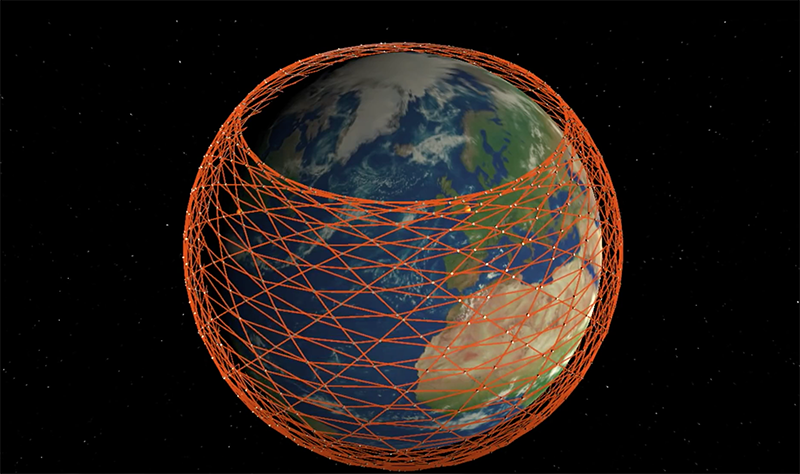SpaceX Receives FCC Approval to Launch 7,518 Starlink Satellites

Starlink visualization. Photo: Mark Handley, University College London
The Federal Communications Commission (FCC) approved SpaceX‘s request to deploy over 7,000 satellites for its Starlink constellation, which aims to provide broadband internet services. The Commission granted SpaceX’s application with certain conditions, authorizing SpaceX to construct, deploy, and operate this new very Low Earth Orbit (LEO) constellation using V-band frequencies.
The Commission also granted SpaceX’s request to add the 37.5-42.0 Gigahertz, and 47.2-50.2 GHz frequency bands to its previously authorized Non-Geostationary Satellite Orbit (NGSO) constellation. The Commission’s action provides SpaceX with additional flexibility to provide both diverse geographic coverage and the capacity to support a wide range of broadband and communications services for residential, commercial, institutional, governmental, and professional users in the United States and globally.
Although SpaceX previously hit regulatory hurdles for the proposed constellation, the company initially got the green light for the Starlink constellation from the FCC in March of this year — but the approval was for 4,425 satellites. This new approval gives the green light for the planned 7,518 satellites in the Starlink constellation. Test satellites were launched in February of this year, and earlier this week, a professor at University College London (UCL) visualized the constellation.
The FCC not only granted the request for SpaceX, but also allow Kepler Communications, Telesat, and LeoSat to roll-out new and expanded services using proposed NGSO satellites. These proposed satellite systems are expected to enable fixed satellite service in the United States, aiming to expand global connectivity and advance the goals of increasing high speed broadband availability and competition in the marketplace. Kepler aims to offer global internet connectivity for Internet of Things (IOT) with a proposed system of 140 satellites; Telesat aims to offer high speed, low latency communication services to the U.S. with a proposed system of 117 satellites; and LeoSat aims to bring high speed connectivity to the U.S. for enterprises and underserved communities with a proposed system of 78 satellites .